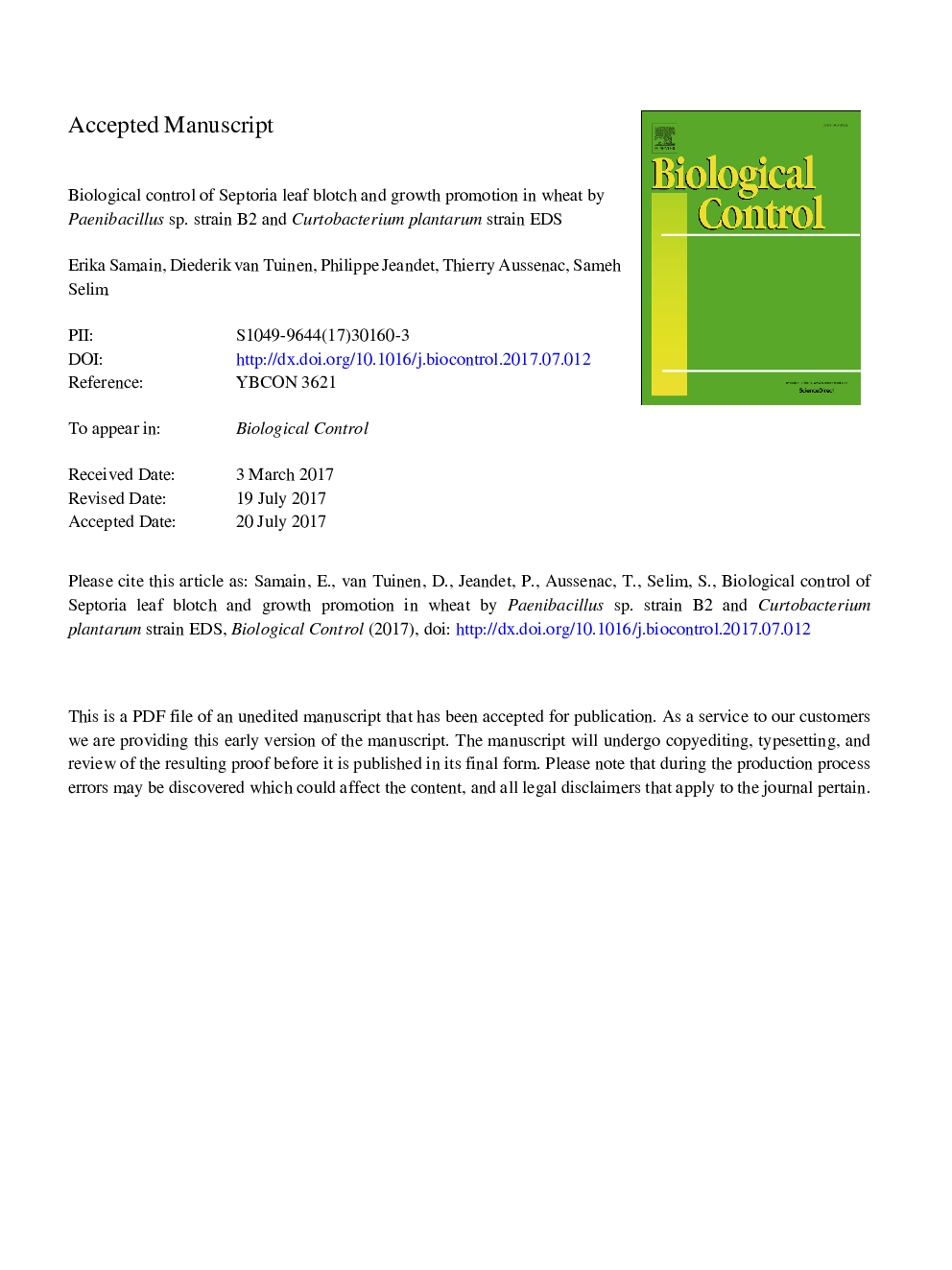| Article ID | Journal | Published Year | Pages | File Type |
|---|---|---|---|---|
| 5760730 | Biological Control | 2017 | 36 Pages |
Abstract
Many of the non-pathogenic endophytic bacteria that reside in plant roots promote plant growth as well as protection against pathogens attack. However, little is known about their mode of action in wheat. We have previously demonstrated the potential of Paenibacillus sp. strain B2 (PB2) to stimulate plant defense mechanisms via its paenimyxin lipo-polypeptide elicitor. Recently, we isolated the Curtobacterium plantarum strain EDS (EDS) from seeds of almost all wheat cultivars. In the present work, the ability of PB2 and EDS to promote wheat growth and protection against Septoria leaf blotch (SLB) was investigated. Results showed that PB2 is a general root external colonizer and cultivar-dependent endophyte. In the endophytic state and only in co-inoculation, it significantly increased the internal root colonization by EDS, resulting in an increase of root and aerial part fresh weights. qPCR analysis showed that, in the endophytic and nonendophytic states, PB2 conferred â¥59% protection against SLB by inducing systemic resistance which is characterized by the over expression of the pr1, lox, Aos, peroxidase, oxo and gst genes. Paenimyxin conferred 76% local protection characterized by the overexpression of the glu, lox, aos, pal, chs, oxo, and gst genes, and 82% systemic protection by chs. It was concluded that PB2 is potentially very interesting in the biocontrol of SLB and, in a mixture with EDS, in the wheat growth promoting. Genes involved in the flavonoid, salicylic acid, jasmonic acid, reactive oxygen species and basal defense pathways seem to play an important role in the resistance against SLB.
Related Topics
Life Sciences
Agricultural and Biological Sciences
Agronomy and Crop Science
Authors
Erika Samain, Diederik van Tuinen, Philippe Jeandet, Thierry Aussenac, Sameh Selim,
